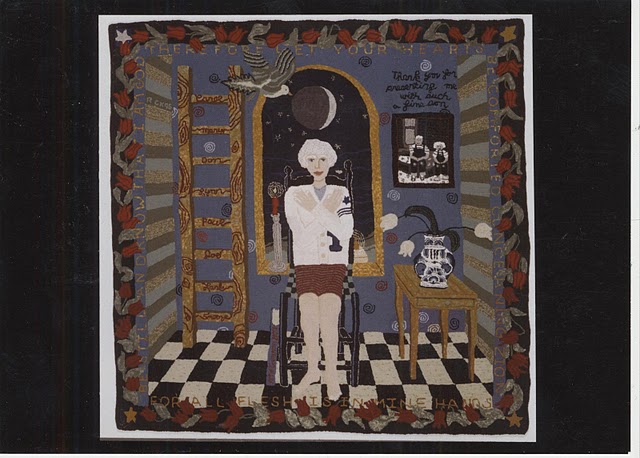
This is part of a triptych I did for a show at the BYU Museum. I was studying sacrifice at the time and wanted to somehow visually represent what was in my head. I felt good about these pieces and was influence at the time with the Gee's Bend exhibit of African American quilters from Alabama so I enjoyed using their idea of free form, especially around the edges. This represents my grandfather on my father's side, Joseph William Clark, who owned a furniture store in Mesa and was very successful. He had given a lot of people credit that never paid him. He was angry about this and held alot of resentment to those people we didn't meet this obligation. He finally realized he needed to repent and forgive those that had taken advantage of him. He called my father and asked him if he wanted to see a $10,000.00 fire. He gathered the bills and threw all of them to the flames and then contacted all those that owed him money and told them their debt was forgiven. I don't think that solution is in any business classes these days but for him it was a part of a sacrifice he felt he needed to make. He was born in 1865 and died in 1948, before I was born. Can you imagine living in Arizona without airconditioning? This is what they faced as they went to that then VERY barren country.






3 comments:
What a great story. I love to hear about these defining moments in other peoples lives to whom I am connected.
I've talked to a few people who remember the pre-AC days here in Arizona and it blows my mind.
I love how he's reaching beyond the border--just like he was able to break the barrier resentment creates and allow for goodness to re-enter his life.
What does the beet represent?
The beet represents how God gave man the charge to take care and feed his family. My grandfather had a big garden, which most people did back then, to help supplement feeding the family. I think Grandpa Clark diagramed it in "Tell Us Another One Grandpa."
Post a Comment